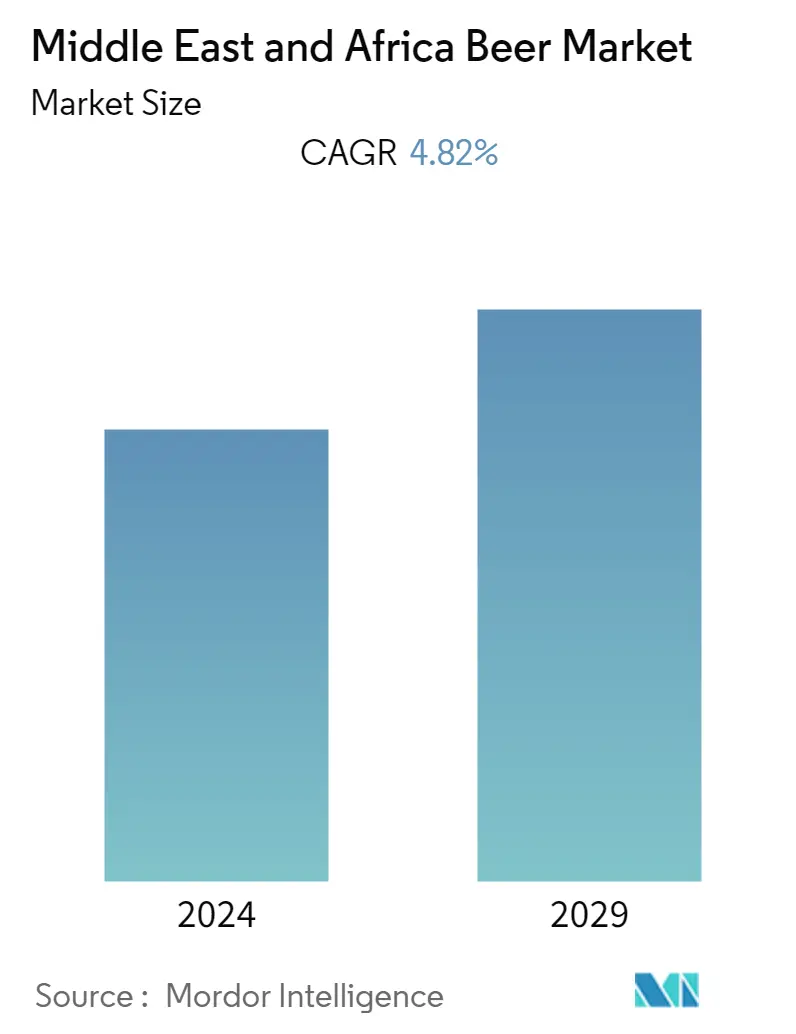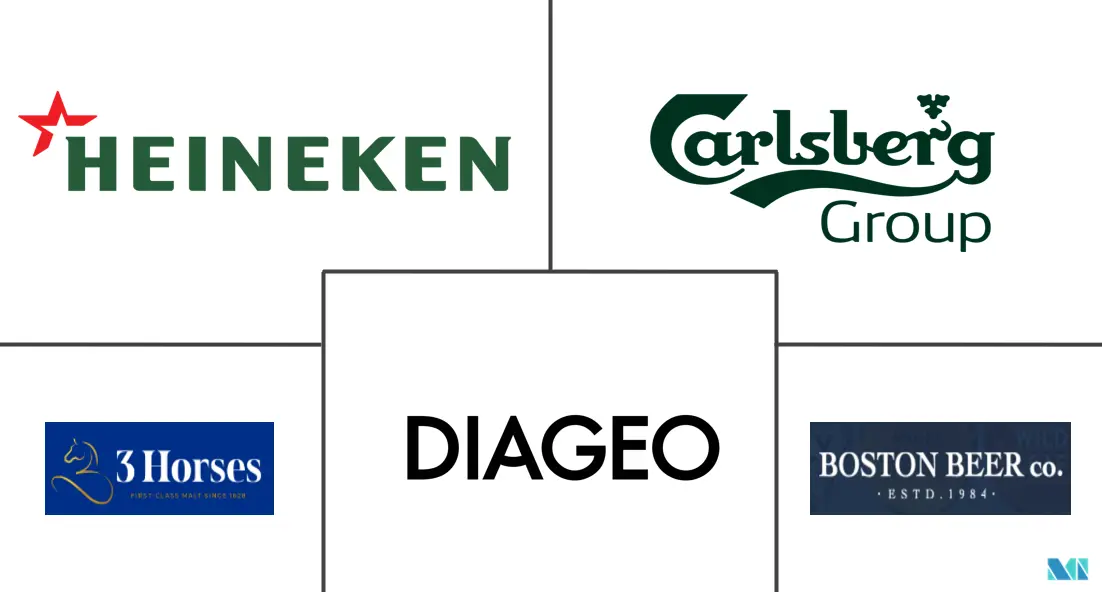Market Size of Middle East & Africa Beer Industry

| Study Period | 2019 - 2029 |
| Base Year For Estimation | 2023 |
| Forecast Data Period | 2024 - 2029 |
| Historical Data Period | 2019 - 2022 |
| CAGR | 4.82 % |
| Market Concentration | Low |
Major Players
*Disclaimer: Major Players sorted in no particular order |
Need a report that reflects how COVID-19 has impacted this market and its growth?
MEA Beer Market Analysis
The Middle East & Africa Beer Market is projected to register a CAGR of 4.82% during the forecast period, 2022-2027.
The Middle East & African beer market may be driven in the medium term by shifting lifestyles, rising alcohol consumption rates, growing urbanization, high disposable incomes, and the youth beer craze. Additionally, the ease of shopping through e-commerce websites is also driving the beer market. Customers across the region prefer doorstep delivery as they consider it a convenient mode of shopping. Hence, the market players are launching doorstep delivery services to cater to the demands of the customers. For instance, in August 2022, African Eastern and MMI introduced a new, legal home delivery service for wines, whiskey, spirits, and beers in Dubai, United Arab Emirates.
Craft beer was a prominent trend in several nations in the region, adding dynamism to the market as a whole with a variety of innovative products. Craft brewers' ales, wheat beers, stouts, and other beverages appeal to beer consumers who are tired of mainstream lagers or who are brand new to the beer industry. Craft beer satisfies the craving for something unique, contributes to the premiumization and sophistication of beer, and provides producers with higher profit margins than the widely available mid-priced lagers.
COVID-19 caused a rise in the cost of both domestically produced and imported beer across the region. The supply chain disruption, which raised the price of raw materials and the transportation of finished goods, was to blame for the price rise. Raw materials were also scarce due to the regional production halt and labor constraints. However, the business has expanded recently, as consumers increasingly favored drinking at home as bars, taverns, and restaurants closed.

